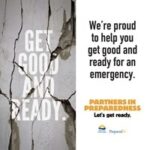Friday Roundup – Three Days or Seven Days? Sell Like Coca-Cola
Things have been busy in the emergency preparedness industry since the 7.7 off the west coast of British Columbia and the superstorm that hit the eastern US. It has given the general public and the emergency management professionals much more to think about.
This week’s roundup features two articles from Eric Holdeman. Eric Holdeman is a contributing writer for Emergency Management magazine and is the former director of the King County, Wash., Office of Emergency Management. His blog is located at www.disaster-zone.com.
The first article is one that on the debate of 3 days (72 hours) or 7 days of preparedness supplies. The superstorm highlighted many instances where a 72 hour supply was simply not enough. On the west coast, where Eric lives is an earthquake zone and a minimum 7 days is what everyone should plan for. In interesting point in his post was the hesitancy of officials to tell people what they really should have in way of preparation because it may discourage them from getting prepared. Hogwash I say!
The second post from Eric is the concept that emergency preparedness should be marketed like Coca-Cola. Again, I agree with Eric in that Coca-Cola advertises all year round an in as many medium that they can. This approach keeps the product in the public’s eye at all times. Brand recognition has been Coca-Cola’s trump card for as long as they have been in business. Emergency Preparedness needs a similar approach as we never know when a disaster can occur.
Have a great week and Be Prepared.











